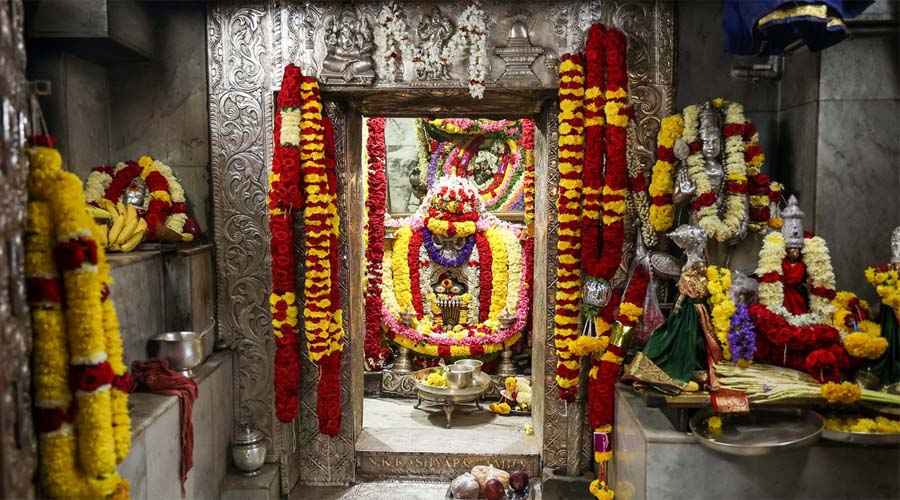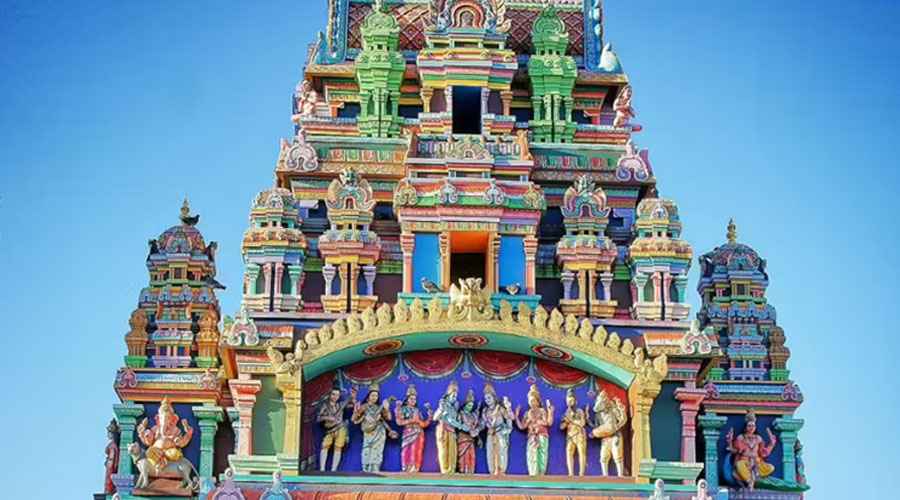Nestled in the historic city of Kolhapur, Maharashtra, the Mahalaxmi Temple stands as one of India’s most revered Hindu shrines. Dedicated to Goddess Mahalaxmi, the goddess of wealth, prosperity, and power, this ancient temple is a magnet for devotees and tourists alike. Known locally as “Ambabai,” Mahalaxmi here symbolizes not only material abundance but also spiritual energy and divine protection. The temple is considered among the prominent Shakti Peethas in India, with a rich tapestry of history, mythology, and culture woven into its very foundations.
Historical Roots and Cultural Legacy
The origins of the Kolhapur Mahalaxmi Temple trace back to around the 7th century A.D., built during the reign of the Chalukya dynasty. Historical records show a deeper connection with the Shilahara dynasty, which also played a vital role in the temple’s patronage and expansion. The temple’s existence is mentioned in several ancient Puranas, emphasizing its religious significance. Over the centuries, rulers from the Konkan, Yadava, and Maratha dynasties contributed to the temple’s upkeep and embellishment.
An intriguing aspect of the temple’s history is its Jain links, with some evidence suggesting it was initially a Jain temple before becoming a Hindu temple dedicated to Goddess Mahalaxmi around the 13th century. The presence of Jain Tirthankara carvings within the complex adds a unique spiritual dimension, reflecting India’s rich religious plurality.
Through earthquakes and natural calamities, the temple has endured and been rebuilt, revealing structures from different historical periods layered together harmoniously.
Architectural Grandeur: Hemadpanti and Chalukya Styles
The Mahalaxmi Temple is an architectural marvel, showcasing a blend of the Hemadpanti and Chalukya architectural styles. The Hemadpanti style—named after Hemadpant, a minister from the Yadava dynasty—features robust black stone construction without mortar, intricate carvings, and ornamental pillars that highlight exquisite craftsmanship.
The layout includes five towering spires or domes, with the tallest one crowning the sanctum sanctorum where the Goddess resides. The temple complex is surrounded by strong masonry walls that provide a serene enclosure for devotees. The main entrance, known as the Mahadwar, is a massive gateway intricately carved with depictions of gods and goddesses.
The 40-kilogram monolithic idol of Goddess Mahalaxmi itself is extraordinary. It is made of black stone embedded with precious stones and diamonds, standing approximately 2 feet 9 inches tall. The statue depicts the goddess with four arms holding symbolic items—the gada (mace), shield, lotus, and a fruit—each representing her divine powers and attributes. A unique feature of this idol is its west-facing orientation, a rare trait for Hindu idols which traditionally face east or north.
Alongside Mahalaxmi’s sanctum are shrines dedicated to her divine forms—Goddess Mahakali on the north and Goddess Mahasaraswati on the south—representing the cosmic energy cycle. The temple complex also houses several smaller shrines for deities like Ganapati, Kalbhairav, and Rakhumai, offering a holistic spiritual experience.
Spiritual and Ritual Significance
The Kolhapur Mahalaxmi Temple is not just an architectural wonder; it is a living spiritual hub. The temple hosts numerous festivals that draw thousands, including the famous Navratri festival and Kiranotsav, where sunlight uniquely penetrates the sanctum to light the deity, symbolizing divine enlightenment.
The temple is also linked with several ancient mythological stories, particularly that of the demon Kolhasur who was defeated by Goddess Mahalaxmi to protect the earth. This victory symbolizes the triumph of good over evil and reinforces the goddess’s role as a protector of devotees.
Devotees visit this temple to seek blessings for wealth, health, happiness, and spiritual wisdom. The temple’s serene location on the banks of the Panchganga River adds to its tranquil atmosphere, enhancing the spiritual ambiance.
Modern Day Management and Accessibility
Today, the temple is administered by the West Maharashtra Devasthan Committee, which ensures its smooth functioning, preservation, and promotion of its cultural and religious heritage. The temple is open to visitors throughout the year, offering pristine facilities for pilgrims.
Kolhapur city is well connected by rail, road, and air, making the temple easily accessible for travelers. The nearby accommodation options range from spiritual guesthouses to modern hotels, catering to diverse preferences.
Why Visit Kolhapur Mahalaxmi Temple?
Visiting the Mahalaxmi Temple in Kolhapur is not just a pilgrimage; it is an immersion into Indian history, architecture, and spirituality. From its ancient stones that whisper tales of dynasties past to the vibrant rituals that celebrate life and divinity, this temple captures the heart of all who enter.
For devotees, it offers divine solace and blessings; for historians and architects, it presents an invaluable cultural treasure; and for travelers, it offers a spiritually enriching experience amidst the backdrop of the historic city of Kolhapur.
Explore the temple, witness the architectural brilliance, participate in the devotional fervor, and savor the serene natural beauty surrounding this timeless shrine dedicated to Goddess Mahalaxmi.



